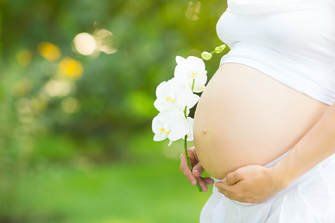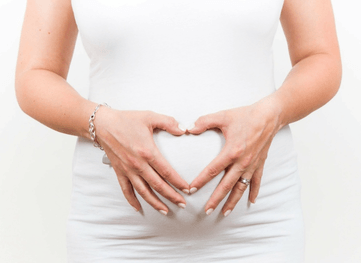News
03 Sep, 2020
Mastitis can be inflammatory, so overfull breasts not draining and milk pushing back into the tissues (this can sometimes fixed early with a prompt full express and cool packs). Or mastitis can be an inflammatory with an INFECTION. Infective mastitis is a serious business. Mums usually have a temperature, feel achy all over, sore red area and pain pain pain. Mums get very sick very quickly so get advice/medical help ASAP (this will include antibiotics) and let all those around you know that your job is to get well and that this will take time and extra support from your crew. The key element is drain drain drain, together with some antibiotics, eating and drinking well with REST. A temporary dip in supply is common but usually passes. PREVENTION is always better than a cure: • Feeding regularly, not going long periods between feeds so no longer than four hours in the first few weeks is best and 2-3 hours is ideal. • Not over-expressing in the first month ( if you don’t need to ), let your body and your baby get in a rhythm first before feed spacing and stocking your freezer. It actually takes 6 weeks to establish breastfeeding. Give yourself time. • Healthy diet is actually one of the best ways to help your body resist mastitis. • Keep nipples healthy to reduce ways for bugs to enter -Rotate feeding positions through the day to drain most areas of the breast. eg: lying down morning and night, cradle in the day, maybe underarm in the evening, whatever works at your house. • Check your breasts in the mirror daily to look for pink or red spots to get onto draining early. If massaging, don’t dig in hard with fingers you can bruise ducts, flat of palm or heel of hand. A little massager that vibrates is fab. • think about a review with a Lactation consultant to talk through prevention before or after episode. - The team at OGB

03 Sep, 2020
Most women feel start to feel their baby move by about 20 weeks and by 28 weeks, these movements occur regularly. These are called fetal movements and can be reassuring for a mother as it indicates that her baby is happy and healthy. Everyone will experience movement differently during a pregnancy, so rather than counting the number of movements, it is important to be aware of your own baby’s individual movement patterns.

03 Sep, 2020
OGB is excited to welcome Dr Katrina Guerin back from maternity leave. Katrina will continue seeing general Gynaecology patients. Whilst on maternity leave Katrina has completed a Masters degree in Reproductive Medicine which focused on fertility and assisted reproductive techniques. Katrina would be delighted to see both previous and new patients. Please call 53398100 to make an appointment with Katrina. #ogbettercare

03 Sep, 2020
Michael Bardsley recently gave an evening education session to a group of GP’s, nurses, and physiotherapists from the Western District in Ararat. The topic of the session was “Pelvic Organ Prolapse - the Vaginal Mesh saga”. Michael spoke generally about prolapse (this is an extremely common problem with about 11% of all women in Australia requiring surgery for prolapse in their lifetime), and about current treatments available, both surgical and non-surgical. He then went on to explain how the use of mesh in the vagina evolved from the early days, and the problems that unfortunately have occurred in some cases.
03 Sep, 2020
Two very important vaccinations to consider during pregnancy are those for the prevention of Influenza (the Flu) and Pertussis (Whooping cough). Influenza Influenza is caused by a virus which is easily spread from person to person. Last year (2017) was a particularly bad season for the Flu. Influenza A and B viruses constantly mutate or change and to reflect this, each year the Flu vaccine has to be modified to provide the best protection against the new varieties of the virus. It is therefore necessary to have the vaccination each year. Influenza can be a severe illness in anyone however those who are vulnerable to very serious complications include the very young, the elderly and pregnant women. Changes during pregnancy, such as those to the immune system, heart and lungs, mean an influenza infection during pregnancy can be far more serious than usual, having the potential to be very dangerous to the mothers health, or result in premature delivery of the baby. All pregnant women are advised to have the Flu vaccine at this time of the year as the Flu season approaches. Contrary to popular opinion, the Flu vaccine does not cause the Flu. The most common side effects are mild pain, swelling and redness at the injection site and sometimes a headache or fever which is short lived. An important added benefit of vaccination during pregnancy is that the antibodies developed by the mother can cross the placenta and protect the baby from Flu infection for the first 4-6 months after birth. Fortunately the Flu vaccine is very safe during pregnancy and also while breastfeeding so please contact your GP to discuss arranging your vaccination. Whooping cough (Pertussis) Whooping cough is a lung infection caused by a bacteria. It is being increasingly seen in our communities with significant outbreaks occurring every 3-4 years. The main symptom of the illness in most adults is a severe persistent cough and the illness is usually successfully treated. The illness, however, is more severe in young children and particularly babies. In this age group, significant respiratory complications can occur and the disease has the potential to be fatal. Babies are unprotected until they have had their first routine vaccination at 2 months of age and will not have complete immunity until they have their subsequent vaccinations at 4 and 6 months. Recent studies have shown that the vaccine is safe and effective during pregnancy and is now recommended from 30-32 weeks of pregnancy. It is also recommended that it be given in each pregnancy even if it has been given in previous pregnancies, as the antibodies produced by the mother will pass across the placenta to the baby and give the baby some level of protection until their first vaccination at 8 weeks of age. Timing of the vaccination at 32 weeks gestation ensures that the antibody levels transferred to the baby are high. Another important consideration during pregnancy is ensuring close family members, grandparents and close friends who will have contact with your baby in the early months are also up to date with their vaccination for Whooping cough. The vaccine in fit and healthy adults should provide ongoing immunity for 10 years at a time. Whooping cough vaccine can be provided by your GP or council run vaccination service. Dr Michael Carter
03 Sep, 2020
The body content of your post goes here. To edit this text, click on it and delete this default text and start typing your own or paste your own from a different source.

03 Sep, 2020
During your pregnancy care at OGB, your Obstetrician, and Midwife will discuss testing for Gestational Diabetes. This is a common condition in pregnancy. If Gestational Diabetes is detected, you, and your OGB team, can play an important role in ensuring the safe birth of your baby. Around 10% of women in Australia develop Gestational Diabetes (GD). There are some pre-existing conditions a woman may have which increase the likelihood of developing GD. Women who have PCOS, are of high BMI, and are pregnant with twins have an increased likelihood. Similarly, women of Asian heritage, and those who have had GD in prior pregnancies may develop GD again. GD is diagnosed by having a glucose tolerance test. You will be asked to have a small blood test when fasted, then have a glucose drink. After the drink, two more tests are taken at one hour intervals. The results of your blood glucose tests will be assessed and your OGB Specialist will give you the results at your next visit. If the result shows that you DON’T have GD, you should still eat a healthy diet, with low levels of sugar and carbohydrates, along with lean meats, fruit and leafy vegetables. If you do have GD, you will be offered an appointment with a diabetes educator, and perhaps a dietician. These people will help you further refine your diet, and show you how to check your blood sugar levels, which will need to be done first thing in the morning, and 2 hours after each meal. Yes, it is involved, but it is important. The majority of women will have good control of their sugar levels simply by watching their diet, and maintaining an active life during pregnancy. For some women, however, the sugar levels remain higher than ideal, and medication is needed. The medication used will be either the oral medication, metformin, or insulin. Your OGB Specialist will advise you as to which is best for you. Further treatment which may be required, especially if you need metformin or insulin, will include more regular visits, ultrasounds to check the wellbeing of your baby, and heart beat monitoring (CTGs). When a woman has GD, it is very common to have induction of labour offered before full term. The plan of induction, and treatment, of women with GD, has been shown to significantly improve the labour experience for the woman, reducing the chances of caesarean section, reducing delivery problems with vaginal birth, and significantly improving the health of the newborn baby. If you do find out that you have GD, don’t worry. Your OGB team know exactly what to do to minimize the likelihood of problems. All the best Russell
03 Sep, 2020
A group in Sydney has recently published results of a study which suggests that taking Vitamin B3 reduces miscarriage rates, and fetal abnormality rates – in mice. They have taken this information, and suggested that the same benefits can be expected in humans. Whilst it is true that, as animals, and mammals, humans do have many similarities to mice, it is well beyond the scope of the published article to conclude that Vitamin B3 supplements could benefit humans. Vitamin B3 is a common component of a healthy diet, which includes fresh vegetables, cereals, and Vegemite! As many people’s diet can be at times, unhealthy, there may be some who are deficient in vitamin B3. When planning a pregnancy, it is recommended to take a pregnancy multi vitamin, as it has been proven, in humans, that particular vitamins, such as folate, reduce the risk of abnormalities. The other vitamins in theses preparations MAY further reduce the risks. There is no vitamin, unfortunately, that has been proven to reduce the overall risk of miscarriage. Whilst this latest report is interesting, we should wait until studies in large numbers of humans have been performed to see whether Vitamin B3 supplements are of benefit to women planning pregnancy. In the meantime, if you are planning to have a baby, keep active, eat a healthy diet, and take a multivitamin supplement! All the best Russell
03 Sep, 2020
Each year, our OGB Obstetricians and midwives care for and help over 400 women to have their babies. Many of the couples who have their babies in Ballarat live a significant distance from Ballarat. In recent times, Russell, Michael, Michael, and Chantelle have looked after women from as far away as Horsham, Nhill, Kaniva, Hamilton, Warrnambool, Colac, Torquay, Naracoorte, Darwin, and even Vanuatu! Women and couples who choose to come to Ballarat, and to be looked after by Obstetricians and midwives from OGB do so for a number of reasons. One of the more common reasons is to be looked after by an Obstetrician who works within the team structure of OGB. It is reassuring to know that every doctor and midwife in our group has a consistent approach to a woman’s care, and a high level of skill to manage anything that can happen during labour. Our clinicians support each other to ensure that high level care is available at ALL times. Our results speak for themselves. OGB looks after approximately 450 women during their pregnancy each year. We also provide antenatal classes through our rooms, along with excellent lactation support once your baby is born and for the first 6 weeks. In Ballarat, we have an amazing group of Paediatricians who provide outstanding care for our newborn babies. We are also supported by an experienced group of anaesthetists who provide 24 hours per day, highly specialized Obstetric anaesthetic care, and comprehensive treatment, should a woman become seriously ill. Both hospitals in Ballarat have expert midwives and an excellent Special Care Nursery for babies who are born prematurely, or happen to be unwell. We can always manage to get our new mums that extra day’s stay to get feeding established, and organize for our OGB Lactation consultant to help with breast feeding challenges once you head home. So how does it all work if you live away from Ballarat? All you need to do is get a referral from your GP, and make an appointment! At your first visit, your OGB specialist will review your Medical and Obstetric history, and, with your consent, perform an examination and an ultrasound for you. This will accurately determine when your baby is due to be born. Depending on your desire, your particular health issues, and the distance you live away from Ballarat, your OGB specialist may suggest having shared care, or alternating antenatal visits with your local GP. Key visits, such as initial review, 28 weeks and 36 weeks visits are always undertaken in Ballarat, and mostly, we will see you each week from 36 weeks. During your visits to your OGB specialist, he or she will carefully assess your and your baby’s wellbeing. Nearer your due date, he or she will perform additional assessments to help predict the likelihood of you going into labour, and sometimes, if you are “almost there”, offer a simple induction to get your labour started. OGB Obstetricians have extensive experience in looking after women who live a distance from Ballarat, and the care we provide leads to virtually all women having their baby in Ballarat. If you are thinking of having your baby with OGB, but live “out of town”, you can simply call us, and ask for an Obstetrician or one of our Midwives to speak to you. All the best Russell
03 Sep, 2020
As many people would be aware there is currently significant media coverage regarding vaginal prolapse, in particular the use of mesh for vaginal repair. It can be very difficult to navigate through the discussion and separate fact from fiction, and to remove emotion and hysteria from the argument. Unfortunately there is also a lack of understanding about what constitutes a mesh, and what surgeries may or may not be ok. So in an attempt to make it all a little clearer I thought I would give you my perspective. Prolapse vs incontinence Firstly, prolapse surgery is different to surgery for stress incontinence. Prolapse surgery aims to correct the protrusion into the vagina whereas incontinence surgery aims to stop bladder leakage in situations such as coughing, sneezing, jumping and running. The most extensively researched treatment for stress incontinence is a minimally invasive procedure called a “mid-urethral sling”. Tens of thousands of women have had this procedure dating back nearly 20 years. It involves generally 3 small incisions, and a small tape (which is made of the same material as a mesh) is introduced to provide support under the bladder neck. Cure rates are very high and complication rates very low. The Cochrane Database (which is a collection of high quality independent reviews based on quality medical research) supports the use of mid urethral slings and in particular says that their safety profile is good. So basically this procedure should not be grouped with the use of mesh for prolapse. I have personally performed many hundreds of these surgeries and continue to believe that as long as patient selection is appropriate that this is a safe and effective procedure. “Native tissue” repair vs mesh repair There has long been debate regarding what is the best way to treat prolapse as there are different surgical techniques available. Well before the arrival of mesh on the scene surgeons have argued how best to correct prolapse and how to try to prevent recurrence. Roughly 1 in 10 women in this country end up having a prolapse surgery in their lifetime - and unfortunately a further 1 in 10 will require a second operation. I perform a particular type of repair called “site-specific surgery”. The concept behind this is that due to various risk factors (including childbirth, ageing, and later menopause) the supportive layers of tissue in the vagina become torn away from their normal attachments leading to prolapse. The surgery identifies this tissue and aims to reattach the tissue to its original place, therefore restoring normal vaginal anatomy. Permanent sutures are placed quite deep and underneath the vaginal skin, with the evidence in my own patients supporting better longer term cures using this technique compared with more traditional surgery. Preliminary data from over 500 cases done at OGB is currently being analysed and will be compared with traditional techniques and with mesh. My feeling from looking at this so far is that the failure rates will be much lower than those with mesh. Complication rates are also extremely low. The issue regarding mesh repair is that it was originally introduced with not enough evidence to say that it is any better than no mesh. There was also no specific training required and no regulation of mesh use. Complication rates are higher and even re-operation rates for prolapse are higher in women who have had mesh surgery. This is not to say that there is never a place for mesh surgery. I have performed about 100 vaginal mesh procedures but only after attending training specific to this operation, and with careful follow up. However, the current medico-legal climate makes it very difficult to argue that there is a place for vaginal mesh at the moment until more trials are carried out. Abdominally placed mesh For many years gynaecologists have been using mesh placed from above the vagina (rather than through the vagina) to correct prolapse of the top of the vagina. Again, the use of mesh in this type of surgery is not included in the current controversy. This operation (sacral colpopexy) has a very high success rate but requires significant expertise to perform. I am able to perform this using a laparoscopic (keyhole) technique which allows patients to head home the day after the surgery. So if your prolapse is suitable for a repair using this technique the use of mesh is not part of the current media hype. Dr Michael Bardsley
Ballarat
1105 Howitt Street
Wendouree Victoria
3355 Australia
Surf Coast
Epworth Geelong
1 Epworth Place, Waurn Ponds
3216 Australia
Abbreviations have been used throughout this website. Please refer to the glossary for full terminology.
© 2024
All Rights Reserved | OGB
site by mulcahy & co marketing